Table of Contents
Can You Muster The Decision-Making Process
Sure you can! It is a matter of training and repetition but in the case of the decision-making process, you need to learn the art of how to think with the right tools.
This article will show you how with 5 critical tips and 7 steps.
Critical Tip 1
The decision-making process In Education – Absence & Avoidance
The decision-making process is at the very center of our lives in every aspect. Thousands of decisions, in all walks of life, are made daily, from choosing a toothpaste to buying a car to getting married to who to fire, and so on.
Most of those decisions are acted upon unconsciously, or at best semi-consciously, but seldom consciously with a decision-making process that leads to the best results possible with minimum errors( even the decision-making process is not perfect).
So the questions must be asked;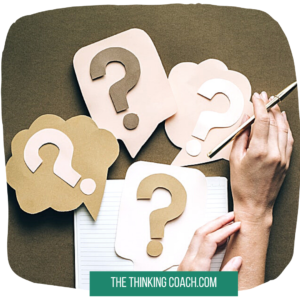
- How is it that such a central skill as the decision-making process is, does not get the attention & focus of every academic institution from grade 1?
- How can it possibly be that so-called educators don’t understand that children are engaged in the decision-making process from the word go and need guidance in how to think?
- How is it possible that so-called educators don’t get it that when children at the age of 3 keep asking WHY, WHY, WHY, that they are asking to be educated in the decision-making process?
The fact of not engaging children consciously in the decision-making process from a very young age means that billions upon billions of children never received or receive the core aspects of real-life education they really need to get by in their life.
Perhaps that’s why so many children and young adults are so untrusting and disinterested in the education system.
They go to school just to meet with their friends and see no value or relevance to a pretentious, so-called education system, that does not cater to their needs but rather to a rigid, obsolete curriculum.
Question – How could it be that Math and Physics are revered while the decision-making process is mostly ignored, absent, and avoided?
Furthermore, what about subjects that are all part of the decision-making process that are essential to its success, like:
- Communication
- Inspiration and motivation
- Active and passive listening
- Emotional intelligence
- Creative thinking
- Critical thinking
- Loom making
- Strategic Thinking (How to think about the future before it gets here)
- How to be kind?
- How to connect to the power of now?
- What does it mean to have compassion?
- What is the importance of standards and principles in their lives?…
- How to think about personal development
- …and much more
I have been engaged in training professionals for over 25 years worldwide and I have taught thousands of professionals.
Do you know where they are lacking the most? What gives them the most trouble? What causes them the most stress? What takes away from their productivity and diminishes their level of efficacy?
Well, the answer is not in Physics, Math, and Chemistry, Marketing, or preparing spreadsheets, and the like.
The answer is…. not knowing how to use the decision-making process with the right soft skills tools and knowing how to “press” the human buttons skillfully to get that magnificent creation called A Human Being to work at an optimal level.
Why Is There Not an emphasis on the decision-making process?
Simple answer…The powers that be do not see the connection between the decision-making process and education. They are stuck in the past and have not added up what has happened to the new generations and what their “cry” is.
They live in their own perception of reality which has nothing to do with current reality, while most of them have never received an education that includes the decision-making process as part of the core curriculum.
…..”So they pass the buck”
When you think about it, you arrive at the frightening realization that there’s a high level of assumption that perverts the decision-making process of the powers that be who are sure of their own ignorance.
They are sure that soft skills are not really important in this cut-throat world and do not need to be skill-based in a firm study of the decision-making process.
Here is a fact for so-called leaders to consider and have it IMPRESS their minds…
Soft skills and soft subjects in the decision-making process account for 90% of professional success, while only 10% is attributed to hard skills and hard subjects such as math, physics, spreadshits, marketing, strategies and the like!

Critical Tip 2
The Many Outlets of the Decision-Making Process
The Decision-making process is ever-present in our lives, every moment of every hour of every day…forever.
Makes you wonder why this is so, doesn’t it? Why is choice ever-present and looming over everything we do?
So, it’d a good idea to be aware of some of the areas where the decision-making process is present.
From small everyday decisions to long-term meaningful decisions that can change the course of our lives, we are at it, all the time.
Furthermore, it can be said that our lives reflect the sum total of all the decisions we made in our life up to this point.
Here are some outlets of the decision-making process which are either unconscious, semi-conscious, or conscious. The more conscious and the more connected to solid reasoning the better the decision-making process.
- What to eat and why
- What attitude to have and why
- How to respond to a question and why
- How to respond to an insult and why
- What to watch on TV and why
- What to listen to from other people and why
- How to communicate a problem and why
- What kind of a leader to be and why
- What brand of toothpaste to use
- What restaurant to go to
- How much tip to leave and why
- To give a homeless person money or not and why
- What to buy and why
- How to drive and why
- How to respond to telephone calls and why
- What is the nature of the decision-making process when we project to the future
- What is the best way to treat my wife/husband/children…and why
- What should I be like as a human being and why?
- …and on, and on, and on
You get yje idea, the decision-making process can be everywhere, and perhaps you may reflect now on all the important decisions you make in your life arbitrarily!
Critica Tip 3
How Does Gut Feeling Integrate With The Decision-Making Process?
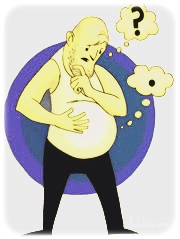
Gut Feeling in the decision-making process is acknowledging that something inside us just knows, better than our brain’s ability to translate…if our gut is aligned to reality.
Instinct, premonition, the unknown intelligence within, call it what you will, it is there, it knows and it tries to communicate to us, how to be, what to do, how to think.
We have different voices that speak to us from inside, which we can easily dismiss and often do.
We tend to have selective listening which is biased according to what we think “makes sense” or logical.
However, what we call logic tends to rely on past experience and, often ignores the now, and the great power associated with being in the now referred to as The Power Of Now.
In a way, by listening to your gut you are beginning to say Yes to the unknown, which is an excellent start if you are truly interested in the bigger picture of the decision-making process.
After all… How many times have you regretted your decisions because you didn’t listen to your gut feeling?
Acting on Your Gut Feeling

How to do it? How do I know for sure?
I can hear you asking these questions…well, I can tell you there is no “Gut Insurance” being sold out there!
So don’t think that this extraordinary quality in you will cater to your usual ways of how you deal with known things. It won’t!
We need to learn to communicate with ourselves better. Often, when we think of communication we think of it as an activity between people.
You are invited to step out of the box and re-think communication and align it with the decision-making process while getting friendly with the inner more quiet part of yourself.
However, point of caution…Beware of a deceptive gut feeling manipulated by wishful thinking.
Your gut feelings depend on your belief system and how you think. Very often the decision-making process is taken hostage by a misguided belief system that is based on wrong facts and even on lies precipitated by others.
10 Steps To Allowing Your Gut To Partner With The Decision Making Process
- Acknowledge Your gut feelings
- Make sure your gut feelings are aligned with the truth and not with wishful thinking
- Make sure that your belief system is aligned with evidenced facts, aligned with your gut
- Develop a relationship with your inner you by talking to yourself
- Ask questions from your gut
- Learn to listen to its fine language…wait and listen
- Don’t put pressure – it has its own timing
- Persist, show interest, have patience
- It will start talking to you if it sees you believe in it
- Learn its language – it is not a convincing language, it’s soft.
- Don’t expect quick results, but they will show up
- Beware of invention
All this seems odd at first, but as you try to put this into practice you will get to be more and more skilled in the decision-making process and you will include more of yourself in the process.
Trust it and It will trust you.
The communication will grow, and you will know what to do and decide.

Personal Story – Gut feeling In The Decision-Making Process
A while back I conducted a seminar for 50 top executives of a Fortune 500 company in the US, which focused on: What Is The Decision-Making Process In The Big Picture
I was flown across half the world to conduct two and a half hours seminar & “wave the magic wand” of the decision-making process on top of the heads of 50 top scientists. But…I forgot to bring it along!
Instead, after careful consideration, and given the wide range of expectations I met from the participants(which I always do before I start a seminar, I ask people what they expect) it became clear that the main issue was How to Use Gut Instinct In the Decision-Making Process.
This was a fascinating route to take and the participants loved every minute of it, as it got them engaged, tuned in, and related to their heavy schedule.
Except… the woman in charge had different ideas.
This extremely rude “so-called leader” had the audacity to judged the hell out of me for not catering to her ignorant and unprofessional expectation of delivering a dry mental formula that she in her gross ignorance thought was the decision-making process.
Which, of course, doesn’t exist in the real decision-making process. As a side note, this so-called leader of the group gave me 1 out of 5 as evaluation while 50! people gave me 5 out of 5.
However, and unfortunately so, a person in my position and experience already knows that many so-called leaders have minimal understanding in such matters.
Yet they assume that because they are called leaders they can decide right and wrong from a platform of ignorance, which is exactly the point of why the decision-making process is so crucial as a life skill for all.
Especially leaders!
To make a long story short.
The Gut Feeling In The Decision-Making Process route was pursued in that above-mentioned training and it was a phenomenal success as it hit the mark and helped these scientists learn important tools, and more importantly, gain the confidence to make holistic decisions that don’t ignore their gut feeling.
Many leaders do not have the necessary decision-making process skills needed to make smart decisions in a professional wholesome way.
Instead, they judge others who don’t agree with them even if those others are far more accomplished professionals than they are.
Critical Tip 4
Making Decisions Vs. The Decision-Making Process
There is a big difference between making decisions and the decision-making process.
You make decisions because you need to make them. The decision-making process, however, is skill-based that needs to be trained for and put into practice
This involves a lengthy explanation, reserved for seminars. But, in short, it demonstrates very well the difference between the small picture and the big picture.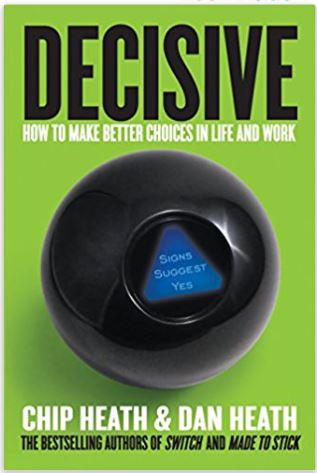
In the case of the Decision Making Process, it is to do with the ability to combine both parts of the brain, in balance, and carefully make a decision.
The process is built on facts, not on perceptions (and you should understand the difference between the two). Here is a link to an article that would give you some ideas.
The decision-making process is dependent on the ability to neutralize BIAS.
BIAS means Ego, Assumptiveness of repeat past performance, or in other words, “what was will always be”, which is nothing more than wishful thinking, avoidance of the facts, and a tainted belief system that feeds the EGO.
If you are able to remove these you can begin to engage in the decision-making process.
Making Decisions
In many cases, it’s defensive decisions, which are made to either prevent potential loss or assume a quick gain.
They are usually based on perceptions of past decisions and stand in opposition to the decision-making process. Making decisions needs to be the result of the decision-making process and not in opposition to it.
Many decisions are influenced by The Comfort Zone, which is meant to keep things going as they are, without “upsetting the balances”, and are called ‘decisions of convenience’, which are often defined by the fear of the unknown.
The problem is that such decisions are often irrelevant to the NOW and lead the end result astray from where they need to be
The decision-making process is an organic process, Making decisions is often not. That’s the difference!
Critical Tip 5
The Synergy of Brain and Feeling In The Decision-Making Process
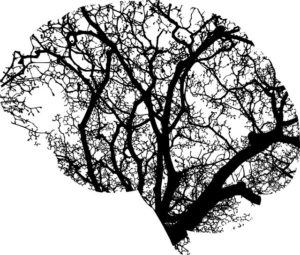
The Brain
The brain is the most sophisticated computer there is and it is extremely important in the decision-making process.
It has a life of its own, the quality of which depends on the quality of information that is fed to it, which will impact the level of the decision-making process.
We physically eat hamburgers and chips. Our brain, however, gobbles up information and impressions. The better the quality of food it gets, the better it computes (digests) the material.
Same as our bodies. If it receives quality organic food it will do better for you. If it’s fed junk food it will be sluggish.
As is the case for the brain, junk thoughts and information make it operate at low levels, become lazy, tired, and unwilling.
What does that have to do with gut feelings? Well, if the brain operates at a low level, it doesn’t do its job as a phenomenal translating and timekeeping machine.
Thus the brain will switch on the wrong kind of feelings
Instead, it controls the person by introducing its own agenda of thoughts and subjects, not according to what is good for the person, but rather according to what it likes “to fly high”.
The brain becomes the “neighborhood bully” overpowering and dominating the soft voice of the Gut.
As you read this don’t be surprised if your brain tells you that all this “gut business” is nonsense, and is not founded in anything real because what you think is real is what your brain has been fed so far and you know nothing else.
This is where humility in the decision-making process is needed and this is where you see how human qualities connect & depend on the level of thinking
If your brain doesn’t like this it will try to make you dismiss it, because a well-nourished EGO, which developed inside your brain does not like its bluff called out!
Feelings

Feelings are there to tell us things that our brain can’t but often they become controlled by our brain. If a person thinks something is unfair, even if it isn’t, it will cause the feelings to feel it’s unfair, which is a far more empowered level than thinking.
Feelings are part of a very sensitive apparatus of the human body and are an extremely important part of the human detection systems and the decision-making process.
But a distinction needs to be made here between different kinds of feelings. Those that are based on the lower emotions and those that originate in the higher emotions.
It will take a whole seminar to fully explore this territory, but briefly…feelings that originate in the lower emotions need to be let go safely.
The feelings associated with the lower emotions are feelings that are natural BUT we don’t need to keep them. They are part of a necessary emotional excretion and are expendable.
Have them but don’t make them the basis of the decision-making process. These are based on doubts, gain, and loss, likes and dislikes, low self-esteem, unfounded worries, past traumas, and negative experiences.
We all have them and we need to let them go gently when they show up and they will.
They come from the fear of being found at fault, the fear of losing control (of the known…) from guilt, shame, fear of rejection, and countless other similar hindrances.
However, they are not the Gut Feelings spoken of. One should never make decisions based on lower emotional feelings – because those are biased and misleading.
By analogy, this kind of feeling can be likened to an aviation phenomenon.
It’s a well-known fact that a pilot can fly a plane upside-down and think they are flying right-side-up.
If it wasn’t for their sophisticated electronic instruments they would crash!
Here is an important fact to consider: The pilot does not know without the instruments that he is on a collision course!
By analogy, isn’t it true that we all develop negative patterns of making decisions that are based on lower emotional feelings that can distort the truth for us?
These patterns give us the illusion we are in the NOW, but the truth is we are not, we are in the past thinking we are flying straight, but really we are on a collision course with the future.
What in This Analogy Would be The Human’s Electronic Instrument Panel?
Well, these are human qualities, a core of stability inside us that is based on long-term values, standards, principles, what we say “No” to.
It is our real purpose in life, the thankfulness we have for what share in our life, the appreciation of small things that we don’t take for granted, our ability to forgive, what we love, what we care about, and other similar qualities.
This is the balance that is so needed in the decision-making process.
These are the character features that positively influence the decision-making process by giving a stable platform of thinking that always takes the big picture into account.
These qualities are part of the higher emotions and provide for us a very accurate compass of feelings. That’s our “electronic instrument” panel that tells us we are flying through the journey of our life right-side-up.
The feelings that originate from these higher emotions are true friends and consultants of the decision-making processes and…through them, we can hear our gut feelings – because our gut feelings are the Super Feelings that have access to extraordinary, new knowledge.
When brain and feelings are aligned the decision-making process flows like unobstructed water. But remember nothing is perfect and never aspire to 100% correct decision, leave 25% for unknown consequences and you’ll be safe.
7 Steps of The Decision-Making Process
Everybody wants steps to apply a system, which is understandable.
But, to be honest, without loving the idea of making real live and conscious choices, the intricacies of the decision-making process, and paying strict attention to the above tips it would be pointless because they will likely not be put to practice.
The 7 steps to the decision-making process are not an intellectual tool they are a doing tool
1. Peridot – Gather all facts needed to make the decision
2. Amethyst – Separate between highly relevant and not so relevant facts
3. Amber – Create a loom of relevant facts. Determine how the highly relevant facts connect to one another and what bigger picture you now see
4. Ruby – This is where feelings come in…What do you feel about the decision-making process you are engaged in so far…if it feels right continue
5. Topaz – Fine-tune the decision-making process by being more exact and clear about what belongs with what, and what needs what to make sure the decision-making process is fitting the needs, circumstances, and timing.
6. Opal – analyze the possible short term and long term consequences of the decision making process you are engaged in
7. Agate – revisit the criteria that govern the decision making process you are engaged in, to make sure you know and are clear with the premise of why you do what you are about to do.
Finally
Well, here it is. The decision-making process and critical tips for you to improve your decision-making process art.
This article shines a bright light on the decision-making process and on critical tips that must be taken into account to make it a smart and…fun process with a minimal amount of room for errors.
This is a critical leadership tool. From these tips and steps, you can devise your own path through the decision-making process that will make you a safer, more effective leader, and more stable person.
Those leaders, managers, and employees who want to stand out in the very turbulent times we live in must realize that their performance depends on the decision-making process that they adopt and practice.
The decision-making process can change the quality of life in many ways and it needs brave and intelligent people to bring it out to the open.
As The Life Coach For The Pro’s, with vast experience, I got my finger on the pulse of the needs of professionals in these changing and turbulent times.

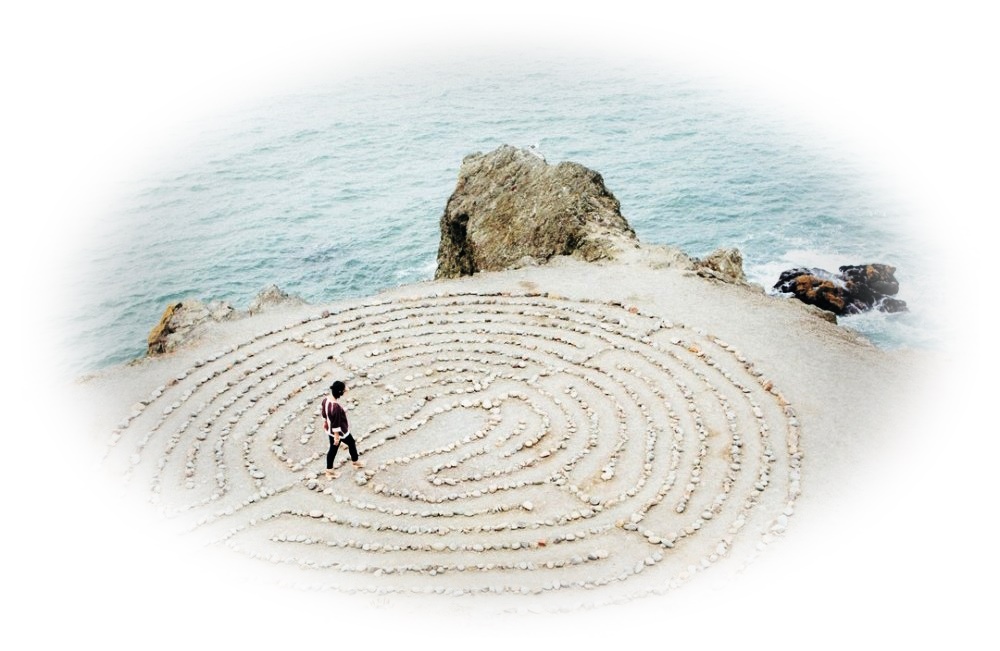
Great help this on the art of becoming a decision maker. We all have trouble at times making decisions. Painstakingly weighing up all the pros and cons.I use to hate hearing,’ not making a decision is a decision unto itself .’ However these days I feel completely in the flow and now when I have spent enough time not making a decision, I like to let it go and have my’gut’ point me in the right direction when the time is right and get on enjoying whatever it is I am doing right now. It’s a very liberating way to live.
Thanking you for so many reminders
Paul
Pingback: 3 Steps To Business Success - Understanding & Using Strategic Planning
Pingback: Perception vs. Reality In Decision-Making - 10 InPoints To Consider
Pingback: 7 Proven Keys to Starting a Business Successfully - The Thinking Coach
Pingback: The Decision-Making Process of an Exceptional Restauranteur - 4 Success Tips - The Thinking Coach